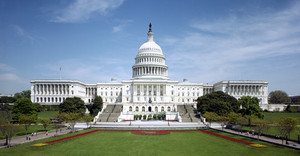Although it has been rejected by several lower courts, generic pre-emption is not yet ‘dead and buried’ as the Supreme Court now takes on the case.
The Supreme Court held in Wyeth versus Levine in 2009 that state law product liability claims against brand-name drug manufacturers are not pre-empted by federal law. Now, the question is whether that decision applies to claims against generic drug makers.
In the case of generics, the issue is whether the Hatch-Waxman Act’s requirement that generic labelling stay the ‘same’ as the originator drug labelling pre-empts state law product liability suits that would require different safety warnings on those same labels.
The Supreme Court decided to hear Pliva versus Mensing even though two lower courts rejected the generic pre-emption defence, and the US Solicitor General’s Office advised the court not to take the case.
There is general agreement that the lower courts were right to reject the generic manufacturers’ pre-emption arguments in Mensing, and there is no need for the Supreme Court to take on the case.
It is also strange that the Supreme Court took on the case when, in another case of generic pre-emption, Perrigo versus Gaeta, involving OTC ibuprofen and liver toxicity warnings, the Federal Appeals Court ruled that there was no pre-emption, and stated that “compliance with both state and federal law was not impossible”.
It is thought that the Supreme Court may have taken the case to resolve what it perceived as confusion about the options that generic manufacturers have to strengthen their labels.
The case involves two women, Ms Mensing and Ms Demahy, who developed tardive dyskinesia, a neurological movement disorder, from long-term use of metoclopramide, the generic version of Reglan.
The plaintiffs argue that although there was mounting evidence the generic drugmakers did not take action to warn of this risk and no labelling change was ever proposed to the FDA. The FDA began requiring a stronger warning on metoclopramide labels in 2009.
The plaintiffs add that generic drug companies are seeking a special immunity from liability that is not available to brand-name drug companies or other manufacturers.
The defendants contend that because the Hatch-Waxman Amendments to the Food, Drug, and Cosmetic Act require generic labels to match those of the brand-name drug, they could not have changed their labels.
The stakes are high, as almost 75% of prescriptions in the US are filled with generic drugs. The plaintiffs say that if their claims are pre-empted, consumers injured by generic drugs would be left without a remedy, although a remedy is available to people injured by brand-name drugs. This could mean that patients lose confidence in generics and only feel protected by the law when taking brand-name drugs.
On the other hand, this could have major implications for the generics industry if they have to settle large claims. Generics manufacturers argue that a ruling for the plaintiffs could “dismantle the very industry intended by Congress when it passed the Hatch-Waxman Amendments and frustrate the congressional design of Hatch-Waxman to make low-cost generic drugs widely available”.
What options are available for generics manufacturers?
Options for generics manufacturers include providing additional warnings through a ‘changes being effected’ label change, requesting a label change through the ‘prior approval’ process or requesting the FDA to send ‘dear doctor’ letters to healthcare professionals.
Source: Aspe Brief, Drug and Device Law, Justice








 0
0











Post your comment